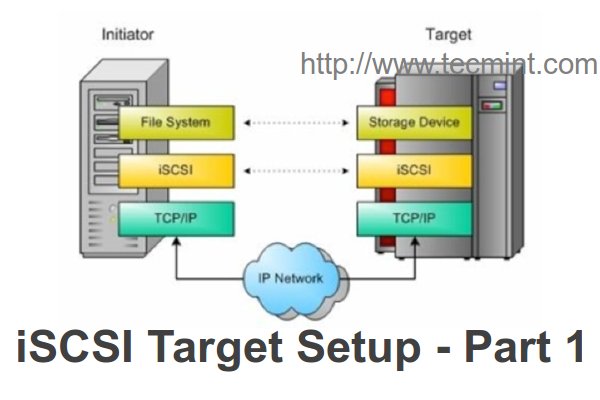iSCSI is a block level Protocol for sharing RAW Storage Devices over TCP/IP Networks, Sharing and accessing Storage over iSCSI, can be used with existing IP and Ethernet networks such as NICs, Switched, Routers etc. iSCSI target is a remote hard disk presented from an remote iSCSI server (or) target.
Why we need a iSCSI adapter for Large storage Area?
Ethernet adapters (NIC) are designed to transfer packetized file level data among systems, servers and storage devices like NAS storage’s, they are not capable for transferring block level data over Internet.
Features of iSCSI Target
- Possible to run several iSCSI targets on a single machine.
- A single machine making multiple iscsi target available on the iSCSI SAN
- The target is the Storage and makes it available for initiator (Client) over the network
- These Storage’s are Pooled together to make available to the network is iSCSI LUNs (Logical Unit Number).
- iSCSI supports multiple connections within the same session
- iSCSI initiator discover the targets in network then authenticating and login with LUNs, to get the remote storage locally.
- We can Install any Operating systems in those locally mounted LUNs as what we used to install in our Base systems.
Why the need of iSCSI?
In Virtualization we need storage with high redundancy, stability, iSCSI provides those all in low cost. Creating a SAN Storage in low price while comparing to Fiber Channel SANs, We can use the standard equipment’s for building a SAN using existing hardware such as NIC, Ethernet Switched etc..
▬▬▬▬▬▬▬▬▬▬▬▬▬▬▬▬▬▬▬▬▬▬▬▬▬▬▬▬▬
► Read more: http://adf.ly/1n45T6
▬▬▬▬▬▬▬▬▬▬▬▬▬▬▬▬▬▬▬▬▬▬▬▬▬▬▬▬▬

No comments:
Post a Comment